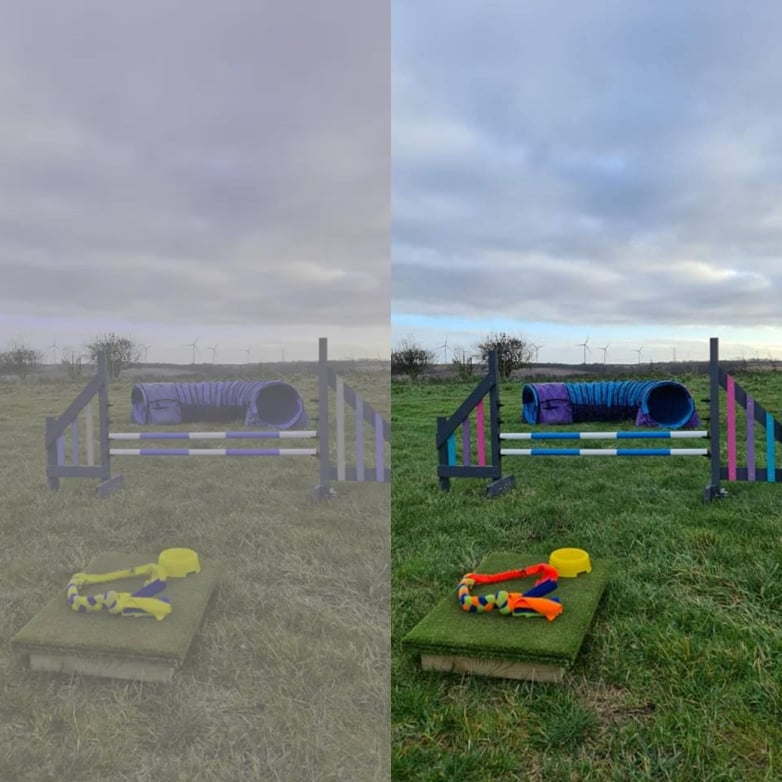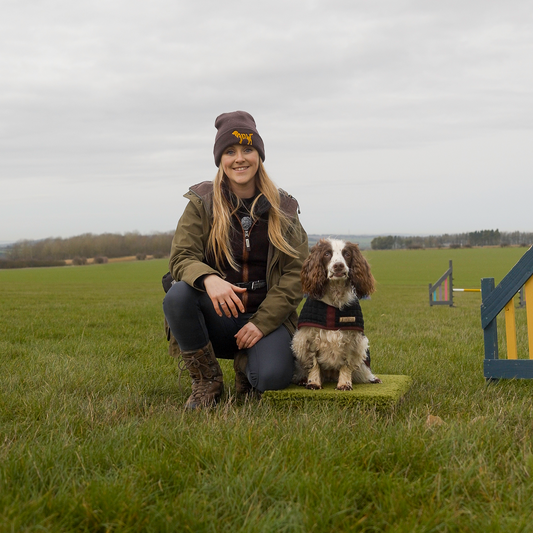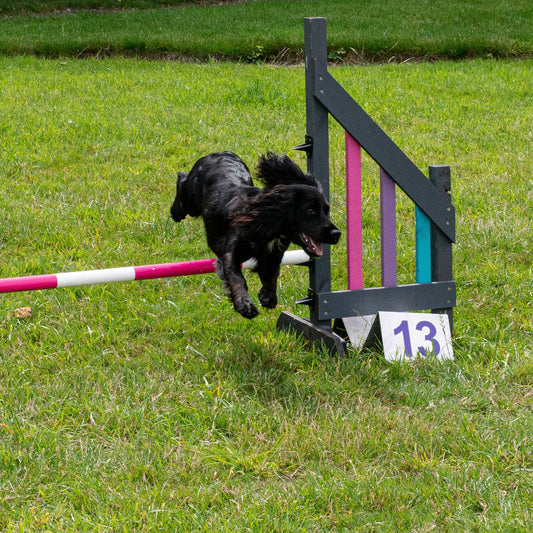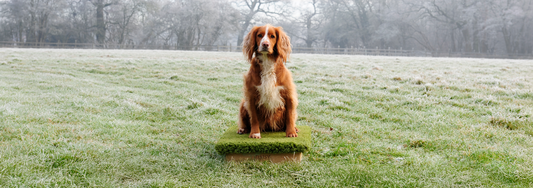Myth busting: can dogs see colour?
It is a myth that dogs only see in black and white.
While dog’s vision is different than their human handlers, it is a common misconception that dogs are colour blind, in fact their vision is colour limited.
How dogs see the world:
Dogs have evolved to take advantage of low light conditions giving them a predatory edge over their handlers. Both humans and dogs utilize rods to see in dim light. A dogs retina consists predominantly of rods, whereas a human retina is mostly made up of cones (cells important for colour vision in bright conditions). [1]

Figure 1 An image of a cross section of a human eye showing that the retina is composed of a balance of rod and cone cells giving them a larger spectrum of visible colours than dogs. Source: website, the conversation "do-dogs-really-see-in-just-black-and-white"
This means that dogs have vision similar to that of humans with colour blindness, in that colours red and green are not easily distinguishable. [2] [3]
“Dogs see in mostly yellow, blue and grey shades. This means that a red toy lying on grass may be hard for the dog to see, whereas blue or while toys are ‘easy mark’.” Emma Filby, Dog Trainer.

Figure 2 the visible light spectrum of a typical human compared to dogs, that have Deuteranopia (red-green colour blindness) and decreased brightness discrimination. [1]
Dog vision apps or online image processing tools you can download onto your phone are a useful way to illustrate this:

Figure 3. Left: How Anglian Dog Works Training Equipment appears to a dog. Right: How the same setup appears to the human eye.
How to use colour in dog training:
Knowing more about how our dogs see the world is a tool we can use in our training plans to set them up to succeed.
Like all animals, dogs learn by operant conditioning. Put simply: If the outcome is good, they are likely to repeat the behaviour. If the outcome is bad, there less likely to offer that behaviour again. In our training sessions creating scenarios where the dog is set up to succeed, allows them to rehearse the behaviours we desire and give us lots of opportunity to reward and reinforce correct choices; this is a much stronger approach than an under planned session where the dog is open to making repeated wrong attempts.
An example of this is practice: when we plan our outdoor training sessions, we can use the colour of the training equipment that we place on grass to progress the difficulty level of drills.
Starting with easier colours for the dogs to mark on the ground can build confidence and allows the dogs to rehearse successful repetitions. To advance practice, you can progress to using more difficult colours which will make training more challenging and engaging.
Foundation Training – plan to use white/blue training equipment or add white tape to articles.
Intermediate Training - plan to use green training equipment.
Advanced Training – plan to use red/orange training equipment.
This principle can be applied to many articles such as gundog dummies, place boards or toys.
Case Study:
Creating a ladder with 3 different colour gundog dummies in a row at increasing distances, then sending the dog each retrieve in turn is an exercise that can build an inexperienced dogs’ confidence to run longer distances and sets up a scenario which encourages the dog not to ‘swap’ dummies for another nearby.
Making the easiest colour to spot first in the ladder, would mean the best colour gundog dummy to set the dog up to succeed on their first retrieve could be blue. The exercise can be progressed by using smaller, harder to mark retrieve articles such as a small orange puppy dummy.
References
|
[1] |
P. E. Miller and C. J. Murphy, "Vision in Dogs," Leading Edge of Medicine, pp. 1623-1634, 1995. |
|
[2] |
M. Siniscalchi, S. d'Ingeo, S. Fornelli and A. Quaranta, "Are dogs red-green colour blind?," Royal Society Open Science, 2017. |
|
[3] |
S.-E. Byosiere, P. A. Chouinard, T. J. Howell and P. C. Bennett, "The effects of physical luminance on colour discrimination in dogs: A cautionary tale," Applied Animal Behaviour Science, pp. 58-65, 2019. |







